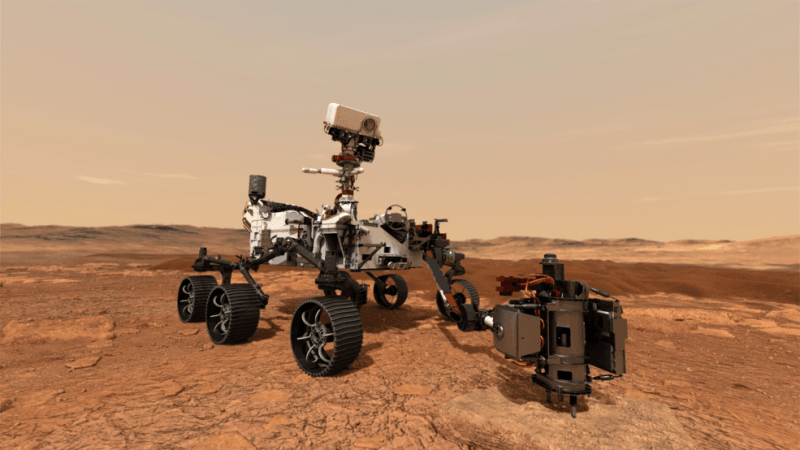The successful sample collection from asteroid Ryugu by Japan's Hayabusa2 spacecraft and moon surface sample by China's Chang'e 5 has set in motion other players to accelerate their missions. US space agency NASA on Thursday announced its approval to Mars Sample Return (MSR) multi-mission to bring the first pristine samples from the Red Planet to Earth, in collaboration with the European Space Agency.
NASA's Mars 2020 Perseverance rover launched in July is set to land on Mars on Feb. 18, 2021. The car-sized rover will search for signs of ancient microbial life using a coring drill at the end of its robotic arm to gather samples of Martian rock and regolith (broken rock and dust), and hermetically seal them in collection tubes.

NASA and ESA will send a Sample Retrieval Lander mission and an Earth Return Orbiter mission, in the latter half of this decade. Since the Perseverance rover has capability for delivery of collection tubes to the lander, once collected and sealed, the system will prepare for the launch and the Earth Return Orbiter already in orbit over Mars will rendezvous with it and capture the sealed sample container, before returning to Earth in the early 2030s, according to NASA's plan.
Bringing Mars samples
Thomas Zurbuchen, associate administrator at NASA Headquarters in Washington, said:"MSR is a complex campaign, and it encapsulates the very essence of pioneering space exploration." Bringing Mars samples will allow scientists to test new theories and development of models, much as the Apollo samples returned from the Moon have done for decades, he said.
Essentially, the MSR campaign accelerates NASA's efforts to send humans to the Red Planet by landing a heavier spacecraft on the Martian surface than ever before. It would also involve launch from and rendezvous operations around Mars for the first time. Prior to it, the Artemis program to moon in 2024 is likely to prepare the ground for NASA's next giant mission of sending astronauts to Mars.

Phase A cleared
NASA's Mars Sample Return Independent Review Board, set up early this year, released its report in October backing the efforts of NASA and ESA to undertake the Mars sample return campaign. NASA's second group of independent experts, the MSR Standing Review Board (SRB), has assessed the MSR program and recommended the program move into Phase A.
"Beginning the formulation work of Phase A is a momentous step for our team, albeit one of several to come," said Bobby Braun, Mars Sample Return program manager at NASA's Jet Propulsion Laboratory in Southern California, which leads development for NASA's MSR effort.
As part of the program, ESA is providing the Earth Return Orbiter, Sample Fetch Rover, and the lander's robotic arm, while NASA is providing the Sample Retrieval Lander, Mars Ascent Vehicle, and the Capture/Containment and Return System payload on the Earth Return Orbiter.














